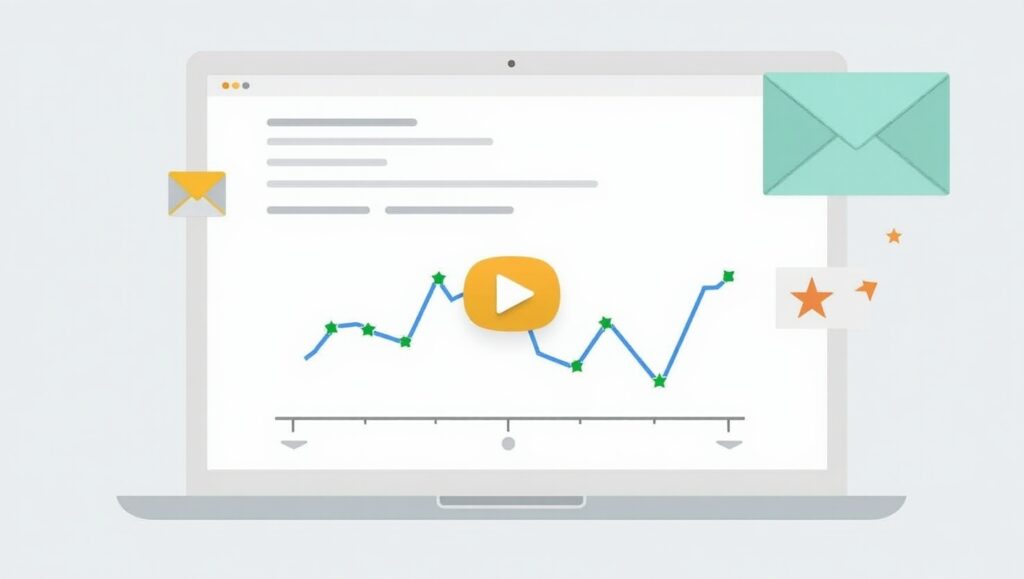welcome denzidesign.com In today’s digital marketing landscape, email marketing remains one of the most effective ways to engage with your audience. But how do you know if your email campaigns are truly successful? This is where Google Analytics with email marketing comes in. By leveraging key metrics, you can track performance, optimize strategies, and boost conversions.
In this guide, we’ll explore the essential email marketing metrics in Google Analytics, helping you make data-driven decisions for improved engagement and ROI.
Why Use Google Analytics for Email Marketing?
The use of Google Analytics in marketing provides deep insights into customer behavior, campaign performance, and conversion tracking. Unlike basic email platform analytics, Google Analytics offers detailed insights that help answer critical questions:
- Are your email recipients visiting your website?
- Which email campaigns drive the most conversions?
- What actions do users take after clicking your email links?
By monitoring the right email marketing analytics tools, you can enhance your strategy and increase engagement.
Key Google Analytics Metrics for Email Marketing
1. Traffic from Email Campaigns
Metric: Sessions & Users from Email
- This metric helps you track how many people visit your website via email links.
- In Google Analytics 4 (GA4), navigate to Acquisition > Traffic Acquisition, then filter by Session Source/Medium to find ‘email’.
2. Email Click-Through Rate (CTR)
Metric: Clicks & Click-Through Rate (CTR)
- A high CTR indicates that your email content and CTAs are engaging.
- Set up UTM parameters to track email campaign performance under Acquisition > Campaigns.
3. Bounce Rate & Engagement Rate
Metric: Engagement Rate (GA4)
- GA4 replaces the traditional bounce rate with engagement rate, showing how many users actively engage with your site after clicking your email.
- A low engagement rate signals that your landing pages may need improvement.
4. Conversion Rate & Goal Completions
Metric: Goal Completions & Ecommerce Conversions
- Define goals such as form submissions, purchases, or sign-ups to track how well your emails drive conversions.
- Check under Conversions > Events in GA4.
5. Average Session Duration & Pages Per Session
Metric: Session Duration & Page Views
- This metric helps determine how long users stay on your site after clicking an email link.
- A higher duration suggests engaging content that retains visitors.
6. Revenue Attribution from Email
Metric: Ecommerce Revenue from Email
- For eCommerce brands, tracking revenue from email campaigns is crucial.
- Navigate to Monetization > Ecommerce Purchases and filter by email to measure sales impact.
7. New vs. Returning Visitors
Metric: New vs. Returning Users
- Understanding whether emails attract new users or re-engage existing customers helps refine your segmentation strategy.
- Find this data under Audience > User Retention in GA4.
How to Track Email Campaigns in Google Analytics
1. Use UTM Parameters
Google Analytics does not automatically track email traffic, so adding UTM parameters to email links is essential.
Example:
https://yourwebsite.com/?utm_source=newsletter&utm_medium=email&utm_campaign=feb_promoThis helps track which campaigns drive the most traffic and conversions.
2. Set Up Custom Events in GA4
GA4 allows for advanced tracking by setting up custom events for specific user actions, such as clicking a CTA button or completing a purchase.
3. Link Google Analytics with Your Email Platform
Many email marketing analytics tools (e.g., Mailchimp, HubSpot, ActiveCampaign) integrate with Google Analytics, making it easier to analyze data within your dashboards.
Benchmarking: How Do Your Metrics Compare?
Understanding email marketing metrics benchmarks helps evaluate your performance against industry standards:
| Metric | Average Benchmark |
|---|---|
| Open Rate | 20-25% |
| CTR | 2-5% |
| Bounce Rate | < 10% |
| Conversion Rate | 1-3% |
If your metrics fall below these benchmarks, it’s time to adjust your email content, segmentation, or call-to-action strategies.
Best Practices for Improving Email Marketing Performance
✅ Segment Your Email List: Personalization leads to higher engagement rates. ✅ Optimize Email Timing: Send emails when your audience is most active. ✅ A/B Test Subject Lines & Content: Experiment with different variations to find the most effective approach. ✅ Enhance Landing Pages: Ensure seamless user experience post-click. ✅ Monitor and Adjust: Continuously analyze metrics and refine your strategy.
Final Thoughts
Using Google Analytics for email marketing provides valuable insights that can significantly improve your campaigns. By tracking key Google Analytics 4 metrics, you can optimize content, increase engagement, and drive higher conversions.
📢 Ready to take your email marketing to the next level? Start implementing these insights today and watch your campaign performance soar! Don’t forget to share your experiences in the comments below. 🚀
Meta Description:
Discover how to use Google Analytics with email marketing to track performance and optimize engagement. Learn key metrics, benchmarks, and best practices for successful email campaigns.
Alt Text for Images:
- “Google Analytics dashboard tracking email marketing metrics”
- “UTM parameters setup for email tracking in Google Analytics”
- “Email marketing perfo

